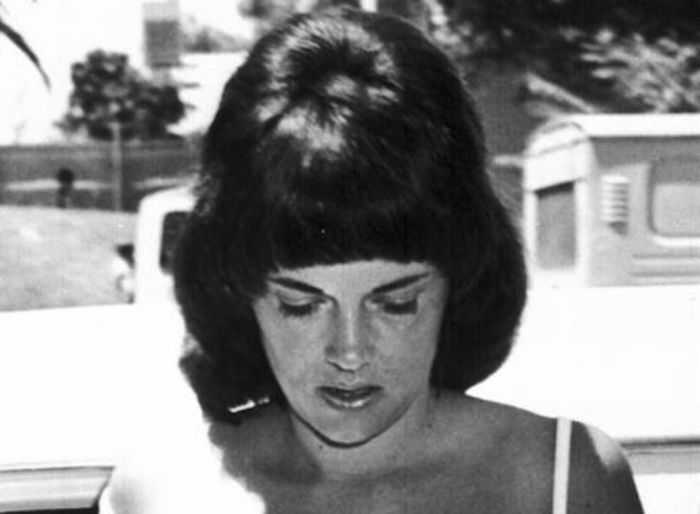However, following further investigation by a determined Northern Territory police force, a second inquest led to a trial and eventually conviction and unjust imprisonment of Azaria’s mother, now Lindy Chamberlain-Creighton. Each step was discussed in the staffroom, and there was a general consensus that what we were witnessing was a modern-day witch-hunt. There was general relief when Lindy was released after three years. Not every Australian shared this relief and the story has become a national obsession, assessed and reassessed in several books, a feature film and a TV series. So how does Alana Valentine take a set of horribly familiar details – nail scissors, a jumpsuit, a singlet, tracksuit pants, the black dress and the fateful matinee jacket – and shape them into such an engrossing theatre?
Valentine chose to approach the story through the 20,000 letters, some of abuse but many of support, that Lindy received during the entirety of her ordeal. Letters that she filed under headings, many of which she summarised and also annotated in the margins, and which ultimately were housed in the National Library of Australia. Let us not pretend. The behavior of the nation seems obsessive, strange, and difficult to place in terms of motivation.
On the structural level, Valentine makes astute use of the dated letters to support the narrative chronologically, cleverly reinforced by strategic costume changes, each indicating a significant stage in Lindy’s story. In addition, the range of letter-writers evidences the extent to which Lindy underwent a change from a private individual to public property about whom everyone could have an opinion without personal knowledge of her or accurate understanding of the events of the night of August 17, 1980. Curiously, she became a powerful presence in the lives of people she would never know.
The bringing to life of the letter-writers through the very accomplished and seamlessly integrated performance of three actors, Glen Hazeldine, Phillip Hinton and Jane Phegan, who represent many and varied voices, is a brilliantly conceived piece of stagecraft. Through the tone of voice, facial expression, gesture and stance we gain insight into the writers’ motivations. A park ranger present at the time of the catastrophe offers well-grounded support while the revelation that a tree has been found bearing the shape of Lindy’s profile is offered in the hushed tone of the more than slightly eccentric. Again, a cheer-up letter, the kind she prefers, provides an opportunity to leaven the painful narrative with a light-hearted song-and-dance item. The three appear and disappear, intrusive sometimes, welcomed at others like persistent memories.
However, the greatest achievement of this chosen device is that it engages us directly with the character of Lindy as she responds to the letters. The performance opens with a latter-day Lindy (a truly mesmerizing Jeanette Cronin) entering a neat middle-class sitting room distinguished only by the 11 cardboard boxes it contains, and a pile of letters on the carpet. As she begins sorting she is assailed by vehement voices as hate-mailers materialise, and our breath is taken away – and our attention gripped – by their vindictive malice. But surprisingly Lindy looks up with a sparkling eye and dismisses them laughingly as “comic relief”. She prefers these letters to the kind that are overly commiserative and an inducement to self-pity. Lindy is even capable of laughing in retrospect at the cruel but inevitable dingo jokes bandied around at the time. Nevertheless, we don’t see her as unscathed but as someone who has learnt not to carry the burden of other people’s negative emotions.
We begin to realise also that Lindy’s storing and filing of the letters became the means through which she maintained her connection with a loved child who vanished into the desert night. After her own perception of events is validated she is able to let go of the evidence that confirms Azaria’s existence, and allow the letters to become history. In a moving conclusion, a symbolic Azaria, washed clean of innuendo, suspicion, and spite, is laid to rest to the accompaniment of a lullaby, and the now closed storage box become an appropriate casket.
The real almost impish Lindy comes on stage for us to see, the legal system is questioned, reforms are mooted. At the same time, the ordered existence implied in the living-room behind the speakers with its strangely ominous overhead fan directly contrasts with the semicircle of sand that borders it. And I wonder about this red land and our uneasy, illegal relationship with it.
Directed with a keen eye for detail by Darren Yapp and with the support of excellent creatives, Letters for Lindy is a model of smooth, subtle, imaginative stage production.





